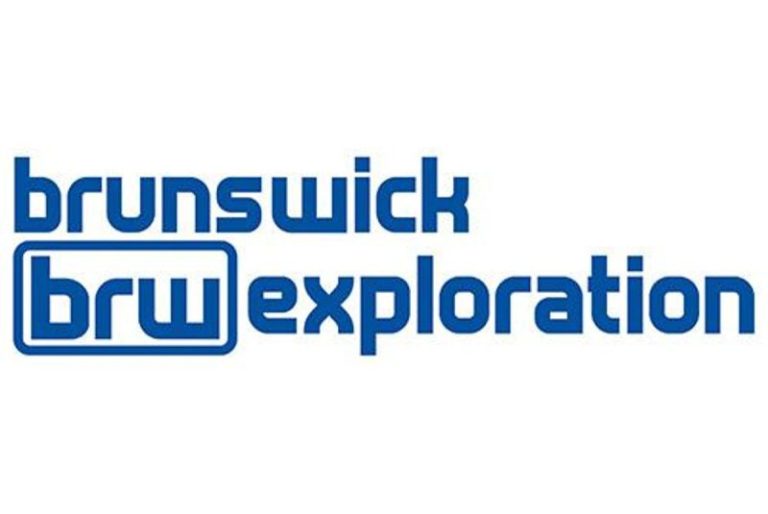The Philadelphia Eagles rode a dominant defensive performance to a 16-9 win over the Detroit Lions in a Week 11 ‘Sunday Night Football’ clash between the NFC contenders.
Vic Fangio’s stop unit relentlessly pressured Jared Goff throughout Sunday’s contest. They sacked the veteran quarterback just twice, but he was hit often during the game, which clearly rattled him.
Goff completed a career-low 37.8% of his passes (14 of 37) for 255 yards, no touchdowns and an interception in the loss. The 31-year-old was sped up by the frequent pressure and never looked comfortable in the pocket.
But while Philadelphia’s defense starred, its offense continued to have its share of issues. The unit was under the microscope in Week 11 after A.J. Brown called it out in an appearance on a Twitch livestream following the team’s 10-7 win over the Green Bay Packers.
Nick Sirianni and Kevin Patullo made a concerted effort to get Brown more involved. He ended up leading the Eagles in targets (11), catches (7) and receiving yards (49) during the game.
However, the overall passing game continued to look lackluster, as Jalen Hurts completed just 14 of 28 passes for 135 yards. They had just one completion of 20-plus yards and simply aren’t the same explosive unit they were at times last season.
Perhaps Eagles fans can take some solace in knowing Saquon Barkley showed signs of life. He racked up 86 rushing yards, his third-most in a game this season, and had several nifty runs late in the game, including a game-winning 8-yard tote on the team’s penultimate offensive snap.
But Sirianni and Co. still have some work to do on that side of the ball, even as they lead the NFC with an 8-2 record 11 weeks into the 2025 NFL season.
USA TODAY Sports provided live updates, highlights and more from the matchup below. All times are Eastern.
Watch ‘Sunday Night Football’ with Fubo (free trial)
Eagles vs. Lions SNF instant takeaways
- More involvement for A.J. Brown doesn’t fix the Eagles’ offense: Brown (seven catches, 49 yards) was far more involved against the Lions than he has been in recent weeks. Even so, Philadelphia struggled to sustain and finish drives, scoring just one touchdown and benefiting greatly from Detroit gifting it great field position on numerous occasions. Nick Sirianni and Kevin Patullo still have some work to do to get this unit figured out as the Eagles look to make another Super Bowl run.
- The Eagles’ improved pass rush makes them a true contender: Philadelphia’s offense may have issues, but its defense is one of the best in the league. One of the big reasons for that? Vic Fangio has done a masterful job of compensating for the offseason losses of Milton Williams and Josh Sweat to rebuild the Eagles’ pass rush. The addition of Jaelan Phillips and the development of Moro Ojomo have played a significant role in Philadelphia maintaining a top-tier defensive line. If the Eagles can pressure opposing quarterbacks like they did Jared Goff, it will be hard to beat them during the postseason.
- Dan Campbell’s aggressiveness is a double-edged sword: When Campbell’s aggressive fourth-down decision-making pays off, it gives the Lions a big-time edge. However, it can also be a hindrance on evenings where Detroit’s offense is out of whack. That was the case against the Eagles, as the Lions went 0 for 5 on fourth-down conversion attempts. Detroit’s inability to convert helped Philadelphia win the field position battle on a windy night. That proved critical in the low-scoring battle.
- Jahmyr Gibbs is one of the NFL’s most electric playmakers: Gibbs was just about the Lions’ only bright spot during a lackluster offensive performance. The star running back ended up leading the team in receiving yards and ripped off a couple of lengthy gains on screen passes, during which he showed off his elite speed and change-of-direction abilities. Gibbs should continue to be a focal point of Detroit’s offense, as he remains a threat to go the distance every time he touches the ball.
Jalen Hurts stats vs. Lions
- 14-of-28 (50% completion rate)
- 135 passing yards
- 0 passing touchdowns
- 0 interceptions
- 63.8 passer rating
- 10 rushing attempts
- 31 rushing yards
- 1 rushing touchdown
A.J. Brown stats vs. Lions
- 7 receptions (11 targets)
- 49 receiving yards
- 0 receiving touchdowns
Saquon Barkley stats vs. Lions
- 26 rushing attempts
- 83 rushing yards
- 0 rushing touchdowns
- 1 reception (2 targets)
- 7 receiving yards
- 0 receiving touchdowns
Jared Goff stats vs. Eagles
- 14-of-37 (37.8% completion rate)
- 255 passing yards
- 1 passing touchdown
- 1 interception
- 60.1 passer rating
- 1 rushing attempts
- -1 rushing yard
Amon-Ra St. Brown stats vs. Eagles
- 2 receptions (12 targets)
- 42 receiving yards
- 0 receiving touchdowns
Eagles vs. Lions highlights
Eagles vs. Lions final score: Eagles 16, Lions 9
Saquon Barkley runs for first down to seal Eagles win
The Eagles won’t allow the Lions to get the ball back. Barkley just crossed the line to gain on a third-down carry and Philadelphia will improve to 8-2 after a hard-fought defensive battle.
Rock Ya-Sin whistled for controversial pass interference call
The Eagles decided to throw the ball on third-and-8. Ya-Sin had tight coverage on A.J. Brown but was flagged for pass interference after hand fighting between the two players.
The Lions still have one timeout left, but the Eagles will be able to bleed most of the time remaining on the clock.
Eagles vs. Lions score: Jake Bates makes 54-yard field goal as 2-minute warning arrives
The Lions weren’t able to get a first down after stopping the Eagles, but Bates came on to attempt a 54-yard field goal. The former soccer player nailed it, cutting the Eagles’ lead to 16-9 with 1:58 left in regulation.
Detroit has all three timeouts remaining, so they will have to stop Philadelphia once to get the ball back.
Eagles 16, Lions 9
Lions have life after stopping ‘Tush Push’ in field goal range
The Eagles decided to try a ‘Tush Push’ on fourth-and-inches with three minutes left in regulation. The Lions managed to stop Jalen Hurts before he made the line to gain, giving Detroit the ball on the edge of field goal range.
The Lions have 2:57 and three timeouts remaining, trailing 16-6.
Lions, facing fourth-and-10, forced to punt with 5:06 remaining
The Lions got the ball close to midfield, but they stalled again when Goff couldn’t complete a pass under pressure. Dan Campbell opted not to go for it on fourth-and-10, so Detroit’s defense will need to get a stop quickly, trailing 16-6.
Eagles punt back to Lions with 6:14 left in regulation
The Eagles were able to run nearly three minutes off the clock, but they opted to punt after a false start on a ‘Tush Push’ attempt on fourth-and-inches. The Lions are trailing 16-6 and will need to get into scoring range quickly to have any chance at making the comeback.
Lions forced to punt after three consecutive incompletions
Jahmyr Gibbs managed to get a first down after handling a carry to open Detroit’s drive. After that, Goff tossed three consecutive incompletions as his struggles continued.
The Eagles nearly muffed Jack Fox’s punt after a blocker nearly crashed into the return man, but the ball ended up bouncing harmlessly out of bounds. Philadelphia will now look to grind some clock, leading 16-6 with 9:06 left in regulation.
Eagles vs. Lions score: Jake Elliott drills 49-yard field goal to give Philly two-score lead
The Eagles only gained 25 yards on an 11-play drive following the Lions’ latest fourth-down failure. Still, it was enough to get into range for Elliott, who managed to make a 49-yarder with ease while kicking with the wind.
Philadelphia now leads Detroit 16-6 with 10:15 remaining in regulation.
Eagles 16, Lions 6
Eagles leading Lions 13-6 entering fourth quarter
Detroit is outgaining Philadelphia 286-183 on the evening, as Jahmyr Gibbs has been a force through the air with five catches for 107 yards.
The issue? The Lions haven’t been able to finish drives. Dan Campbell has been aggressive with his play-calling, but Detroit has failed to convert any of its five fourth-down attempts while Jared Goff was also responsible for an early-game interception.
Will things change in the fourth quarter? The Eagles will open the quarter facing a second-and-18, but the Lions’ issues haven’t been on defense. They will need to get a stop, but the offense has to find a way to get into the end-zone.
Jared Goff misfires again on fourth-and-3, turns ball over on downs
The Eagles have gotten a lot of pressure on Goff throughout the night. He appears to be rattled, as he has often misfired in key passing scenarios tonight.
That includes the Lions’ most recent fourth-down conversion attempt. Goff tried to connect with Amon-Ra St. Brown, but his throw wasn’t anywhere near his top receiver.
Detroit is now 0 for 5 on fourth-down conversions, but Dan Campbell seems likely to remain aggressive on a windy night in Philadelphia.
Eagles flip field but are forced to punt
The good news for the Eagles? They managed to get the ball to midfield after starting at their own 4-yard line. They got there after a big strike to Jahan Dotson and a personal foul penalty against Brian Branch.
After that, however, Philadelphia once again stalled out, with Jalen Hurts’ third-and-15 heave to A.J. Brown sailing well past the wide-out. Braden Mann came on to punt and the Lions will get the ball back on their own 15-yard line.
Lions can’t convert fourth-and-goal, as Jared Goff tosses incompletion
The Lions have now turned the ball over on downs four times. This time, Dan Campbell’s squad went for it on a fourth-and-goal from the 4-yard line in a game they were trailing 13-6.
The Eagles were able to get pressure on Jared Goff, who fired a desperation heave in the direction of Amon-Ra St. Brown that fell harmlessly to the ground. Goff appeared to have tight end Brock Wright open on the right side of the field, but it wasn’t clear whether he saw him.
Detroit’s latest turnover came at the end of a promising drive that was led by Jahmyr Gibbs. The young back had a 42-yard gain on a screen pass and some tough runs between the tackles to get the Lions into scoring range.
Eagles whistled for false start on ‘Tush Push’
The Eagles were lining up to attempt the ‘Tush Push’ on third-and-1, but Tyler Steen was whistled for a false start. It appeared to be the incorrect call, as the Lions’ defender had his hand in the neutral zone and Steen reached down to touch it, which should have created a neutral zone infraction penalty.
Philadelphia was forced to punt after an incompletion on third-and-5, giving Detroit a chance to cut into the Eagles’ 13-6 lead.
Lions log third turnover on downs as Jared Goff can’t connect with Jameson Williams
The Lions found themselves in no man’s land, facing a fourth-and-5 on their first drive of the second half. Goff had Williams streaking open over the middle of the field, but the wide-out couldn’t bring in the pass, which came in a bit low but was catchable.
Amon-Ra St. Brown also had a potential first down glance off his hands on a third-down pass.
Lane Johnson injury update
The Eagles have ruled out their starting right tackle, Lane Johnson, for the remainder of Sunday’s game with a foot injury.
Eagles leading Lions 13-6 in back-and-forth first half
Both the Eagles and Lions started the game slowly on offense amid windy conditions at Lincoln Financial Field. Each offense started to pick up the pace late in the first half, as the two traded touchdowns to close the half.
The Lions have relied on their passing game to carry them, as Jared Goff has completed 7 of 12 passes for 119 yards, one touchdown and one interception. He struggled early to complete passes in the wind but was able to lay one up perfectly to Jameson Williams (two catches, 59 yards) for the team’s lone score.
Meanwhile, the Eagles have gotten the ball in Lions territory on three of their possessions, thanks to Goff’s interceptions and two turnovers on downs. Jalen Hurts has the team’s lone score – a 1-yard ‘Tush Push’ TD – while A.J. Brown (six catches, 43 yards) has been very involved in Philadelphia’s offense.
Detroit will get the ball to start the second half.
Eagles vs. Lions score: Eagles score on ‘Tush Push’ after Saquon Barkley ruled short
The Eagles appeared to get a score on a 5-yard Barkley run, but he was just inches short of the goal-line with 32 seconds left in the first half. That didn’t bother the Eagles too much, as Jalen Hurts simply powered the ball the last foot into the end zone.
Jake Elliott made the extra point, and Philadelphia leads 13-6 with 16 seconds left in the first half.
Eagles 13, Lions 6
Eagles vs. Lions score: Jared Goff hits Jameson Williams for 40-yard touchdown
The Lions are on the board with the game’s first touchdown. Goff found Williams breaking across the middle of the field and hit the speedster, who outran the Eagles’ defense for a score.
Williams was flagged for an unsportsmanlike conduct penalty for his celebration after scoring. Jake Bates missed the backed-up extra point amid a strong, left-to-right wind, keeping the score tied at 6-all with 5:05 left in the second quarter.
Eagles 6, Lions 6
Eagles vs. Lions score: Jake Elliott makes 34-yard field goal to extend Philly lead
This time, the Eagles capitalized on the Lions’ turnover on downs. Jalen Hurts hit A.J. Brown for a 10-yard gain on third-and-15 to set Elliott up with a makeable field goal.
Philadelphia originally bluffed as if it was going for it on fourth-and-5 but called a timeout and brought Elliott out. He made the 34-yard kick with ease to give the Eagles a 6-0 lead with 6:02 left in the first half.
Eagles sniff out Lions fake punt, come up with key stop
The Lions looked like they were going to go three-and-out after Jared Goff and Amon-Ra St. Brown couldn’t connect on a middle-of-the-field pass. However, Dan Campbell and Co. decided to fake a punt, and snapped the ball to personal protector Grant Stuard on a fourth-and-2.
The Eagles were able to come up with the stop, as Moro Ojomo and Jalyx Hunt were credited with making the stop. Philadelphia will once again have good field position, already at the Detroit 43-yard line.
Jalen Hurts throws three incompletions as Eagles go three-and-out
The Eagles could not take advantage of the great field position gifted to them by the Lions. Hurts was unable to connect with his receivers on three downfield shots, with his final pass intended for DeVonta Smith being broken up by Amik Robertson.
Braden Mann’s punt went just 28 yards in the wind. Kalif Raymond fair caught it but a 15-yard penalty on Jeremiah Trotter Jr. of the Eagles gifted the Lions extra yardage. As a result, Philadelphia only netted 13 yards of field position from the punt.
Jahmyr Gibbs stopped short of line on fourth-and-1 carry
The Lions decided to go for it on fourth-and-1 near midfield but Gibbs was stonewalled by Eagles defensive tackle Moro Ojomo. Philadelphia now gets the ball back in excellent field position at Detroit’s 48-yard line, looking to build upon its 3-0 lead.
DeVonta Smith can’t handle third-and-8 pass, forcing punt
The Eagles continue to struggle to move the ball offensively. Jalen Hurts tried to hit Smith just short of the sticks on a third-and-8 to open the second quarter, but the top wide-out was unable to reel in the pass.
Braden Mann’s punt traveled 44 yards and Detroit will get the ball back on its 39-yard line.
Eagles leading Lions 3-0 after first quarter
Neither Philadelphia nor Detroit was able to build much rhythm on offense in the first half. Both teams appear to be adjusting to the windy conditions in Philadelphia, as the two teams combined for just 98 yards of offense.
The Eagles’ lone scoring drive was set up by a Jared Goff interception that was deflected at the line of scrimmage. Nick Sirianni and Jalen Hurts also appear to be making a concerted effort to get A.J. Brown the ball, as he was targeted four times on Hurts’ seven passing attempts in the opening frame.
Lions punt after stalling out beyond midfield
The Lions got near the edge of Jake Bates’ field goal range, but given the windy conditions, the team decided not to attempt the kick. Instead, Detroit bluffed going for it on a fourth-and-6 but ultimately took a delay of game and punted.
Jack Fox’s punt went 30 yards and was fair caught by the Eagles at their 15-yard line.
Lane Johnson injury update
The Eagles announced that Johnson, their starting right tackle, is ‘questionable’ to return to Sunday’s game because of a foot injury.
The NBC broadcast showed Johnson walking slowly to the Eagles’ locker room during the first quarter. Fred Johnson would likely replace Johnson at right tackle if he’s unable to return.
Eagles pass on ‘Tush Push’ opportunity, stuffed on third down
The Eagles were facing a third-and-1 on their most recent drive, and almost everyone assumed they would run their ‘Tush Push’ play. Instead, the team ran the ball up the middle with Saquon Barkley but saw him get stuffed for a 1-yard loss.
Philadelphia had to punt after losing a yard. Braden Mann’s kick once again pinned Detroit inside its own 15-yard line.
Lions go three-and-out on second possession as Jaelan Phillips gets sack
Phillips was Philadelphia’s prized trade deadline acquisition, and he is immediately making an impact for the team. He quickly got pressure on Jared Goff during the Lions’ second drive and managed to bring down the quarterback for a sack.
Goff couldn’t convert on a third-and-long pass that fell short of his intended receiver, so Detroit punted the ball back to Philadelphia.
Eagles vs. Lions score: Jake Elliott makes 27-yard field goal to open scoring
The Eagles are on the board first for ‘Sunday Night Football.’ They weren’t able to turn Jared Goff’s turnover into a touchdown, as Rock Ya-Sin had nice coverage on A.J. Brown on a third-and-8 to force the fourth-and-long, but Elliott was able to make the chip shot without a problem despite windy conditions.
Philadelphia now leads 3-0 early in the first quarter.
Eagles 3, Lions 0
Jared Goff pass deflected, intercepted by Cooper DeJean
Goff completed a couple of horizontal passes to open the game, but his third pass was deflected at the line of scrimmage. It popped into the air and into the waiting arms of DeJean, who brought it inside the red zone to set up a quality scoring chance for the Eagles.
Lions force Eagles punt after holding penalty
The Eagles got on first down on their opening drive, but they stalled out after that, thanks, in part, to a first-down holding penalty.
Braden Mann’s punt was fielded by Kalif Raymond at Detroit’s 15-yard line, which is about where Detroit will start its first offensive drive.
A.J. Brown applauded after catching first down to open game
Brown made headlines ahead of Week 11 after calling upon the Eagles’ offense to perform better. He also has been vocal about wanting to be more involved, as he is on pace for a career-worst season, so the Philly crowd gave him a rousing cheer after Jalen Hurts hit him for a first down on the Eagles’ first drive of the game.
Who are the announcers for Eagles vs. Lions on NBC?
Mike Tirico will handle play-by-play duties during the game, with Cris Collinsworth providing color commentary and Melissa Stark reporting from the sidelines.
NBC’s weekly ‘Football Night in America’ pregame show will begin at 7 p.m. ET and feature insight from a panel of analysts, including Maria Taylor, Jason Garrett, Chris Simms, Mike Florio, Devin McCourty, Tony Dungy, and more.
What time is the Eagles vs. Lions game on tonight?
The Eagles and Lions are scheduled for an 8:20 p.m. kickoff, the customary start time for ‘SNF.’ The Lions travel to Lincoln Financial Field in Philadelphia, Pennsylvania for the matchup.
What channel is the Eagles vs. Lions Sunday Night Football game?
NBC is the broadcast home of ‘SNF.’ Mike Tirico will be on the call with Cris Collinsworth, as Melissa Stark will provide reports from the sideline.
Eagles vs. Lions stream
- Live stream:Fubo | Peacock
Cord-cutters looking to watch the ‘SNF’ matchup between the Eagles and Lions can tune to Fubo, which carries NBC and offers a free trial.
Peacock, NBC’s proprietary streaming service, will also carry the matchup.
Watch ‘Sunday Night Football’ with Fubo (free trial)
Eagles vs. Lions prediction
The Eagles have to figure out the A.J. Brown situation, and fast. While Philadelphia has gotten to a 7-2 record without solving that equation just yet, Brown’s apparent disdain of the offense has made somewhat unwanted headlines and back pages throughout the season. The Lions will get the big-time road win and stay atop the NFC North.
Prediction: Lions 30, Eagles 24
Eagles vs. Lions live betting odds, moneyline, O/U
Eagles inactives vs. Lions
Lions inactives vs. Eagles
Eagles schedule 2025
Lions schedule 2025
Eagles vs. Lions injury report
Is Sam LaPorta playing tonight vs. Eagles?
No, the Lions tight end was placed on Injured Reserve before Week 11 with a back injury. He will now miss at least four games, starting with tonight’s ‘Sunday Night Football’ matchup against the Eagles.
Is AJ Brown playing tonight vs. Lions?
Brown had no injury designation on the Eagles’ Week 11 injury report after he was a full participant in practice all week.
He appears to be a full-go for ‘Sunday Night Football’ against the Lions.
NFC North standings
The Lions enter ‘Sunday Night Football’ in second place in the NFC North. Here’s how the division stacks up:
- Chicago Bears (7-3)
- Detroit Lions (6-3)
- Green Bay Packers (6-3-1)
- Minnesota Vikings (4-6)
NFC East standings
The Eagles enter ‘Sunday Night Football’ in first place in the NFC East. Here’s how the division stacks up:
- Philadelphia Eagles (7-2)
- Dallas Cowboys (3-5-1)
- Washington Commanders (3-8)
- New York Giants (2-9)
4th & Monday: Our NFL newsletter always brings the blitz
Do you like football? Then you’ll enjoy receiving our NFL newsletter in your inbox.
Get the latest news, expert analysis, game insights and the must-see moments from the NFL conveniently delivered to your email inbox. Sign up now!
This post appeared first on USA TODAY










